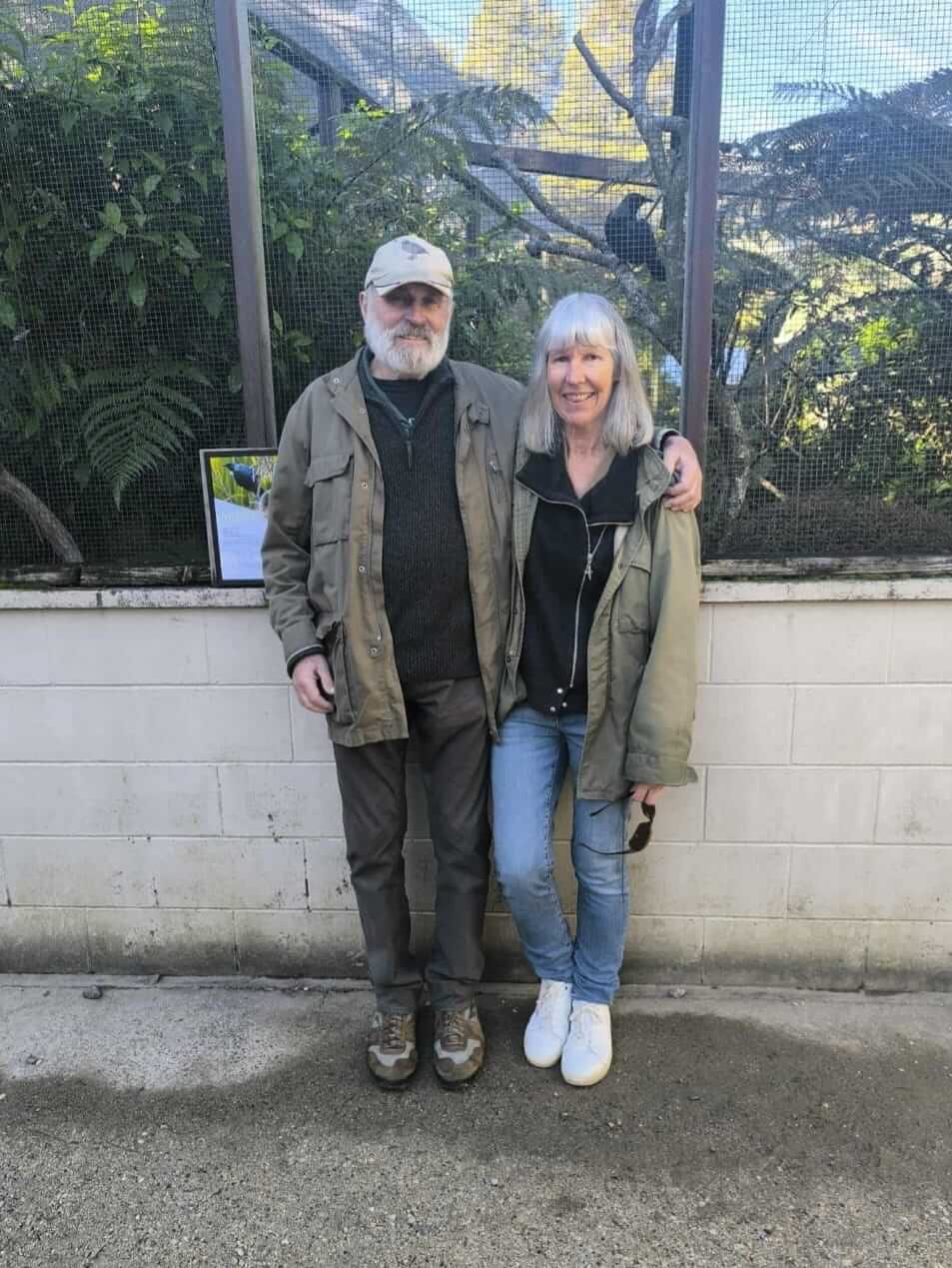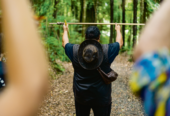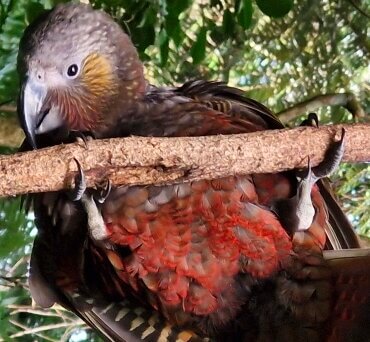
A three and a half month old fledgling pictured at Maungatautari
Sally and Eric Fox spent 32 years working at the Ōtorohanga Kiwi House where Eric was curator. Since retiring they have been volunteering at Sanctuary Mountain Maungatautari in the aviary team. Today Sally discusses working with kākā – which come to Maungatautari from three areas, enabling the breeding programme to maintain a large genetic base.
Sally and Eric Fox
For the past five years, we have been enjoying volunteering out at Maungatautari Sanctuary Mountain assisting in the Aviary team looking after the kākā and hihi in the Southern Enclosure with supplementary feeding and monitoring and also caring for rescued and captive-bred kākā housed in aviaries in the forest prior to being soft-released.
After working with the kākā at the Ōtorohanga Kiwi House for many years, we are well-acquainted with them and their incredible personalities.
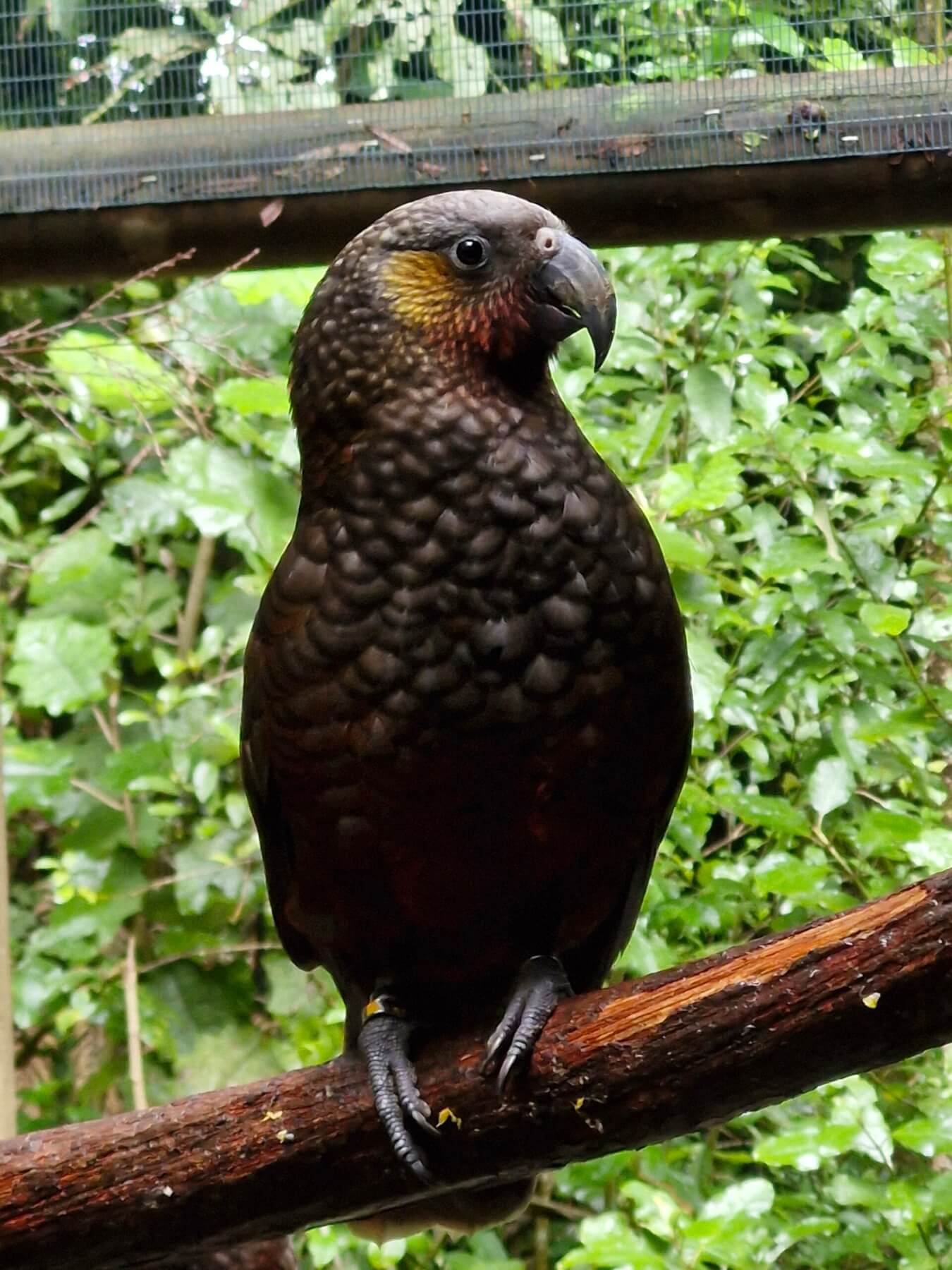
Mum – the fledgling’s banded female parent.
Kākā have been breeding well over the years in the safety of the sanctuary since initially being released into the Southern Enclosure in 2007. We feel very lucky to be able to enjoy the vibrant group out there (a mixture of banded and unbanded kākā, with a ton of personality). They have such a fun-loving spirit enhanced by their wonderful array of melodic and raucous whistles and everything in between – such great entertainers and a highlight with visitors.
Presently we are enjoying watching a female kākā raising her delightful juvenile (a late nesting) teaching it meticulously the skills for survival and feeding. Kākā are excellent parents.
The other area we have very much enjoyed is helping with the care and feeding of the captive-reared kākā and rescued kākā who are housed for around a month in large aviaries within the forest which accustoms them to their new surrounding before being soft-released.
These kākā at different times have come from Hamilton Zoo (light purple band), Pūkaha National Wildlife Centre (light blue), and Ōtorohanga Kiwi House (light green). If these birds are sighted the different colours identify where they have come from, plus each individual bird will have a metal band numbered which is recorded in a studbook and two colours on the other leg which identifies the individual. If you do sight kākā in the wild, it is worthwhile reporting location and if possible, any bands seen to the Department of Conservation.
It is great to hear about increasing sightings of Kākā in the wild, and the ongoing research being done to help with their protection and welfare.
It is lovely to have places like Maungatautari where you can enjoy these charismatic birds in such a natural and beautiful environment. I would also like to highlight the gorgeous pair of Kākā at the Ōtorohanga Kiwi House who have been breeding so successfully over the past few years and bringing important new genetic lines into the wild population.
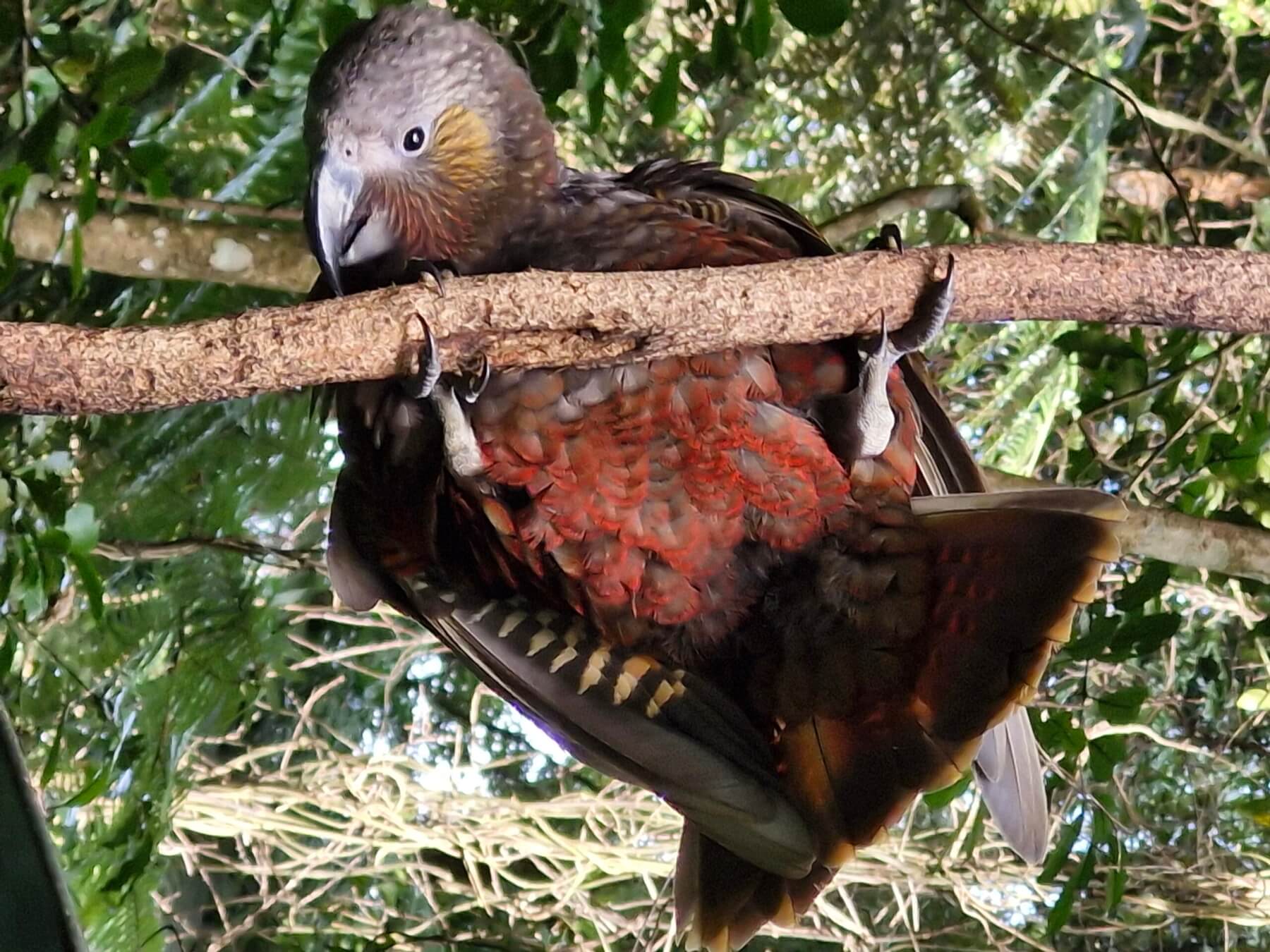
A three and a half month old fledgling pictured at Maungatautari



